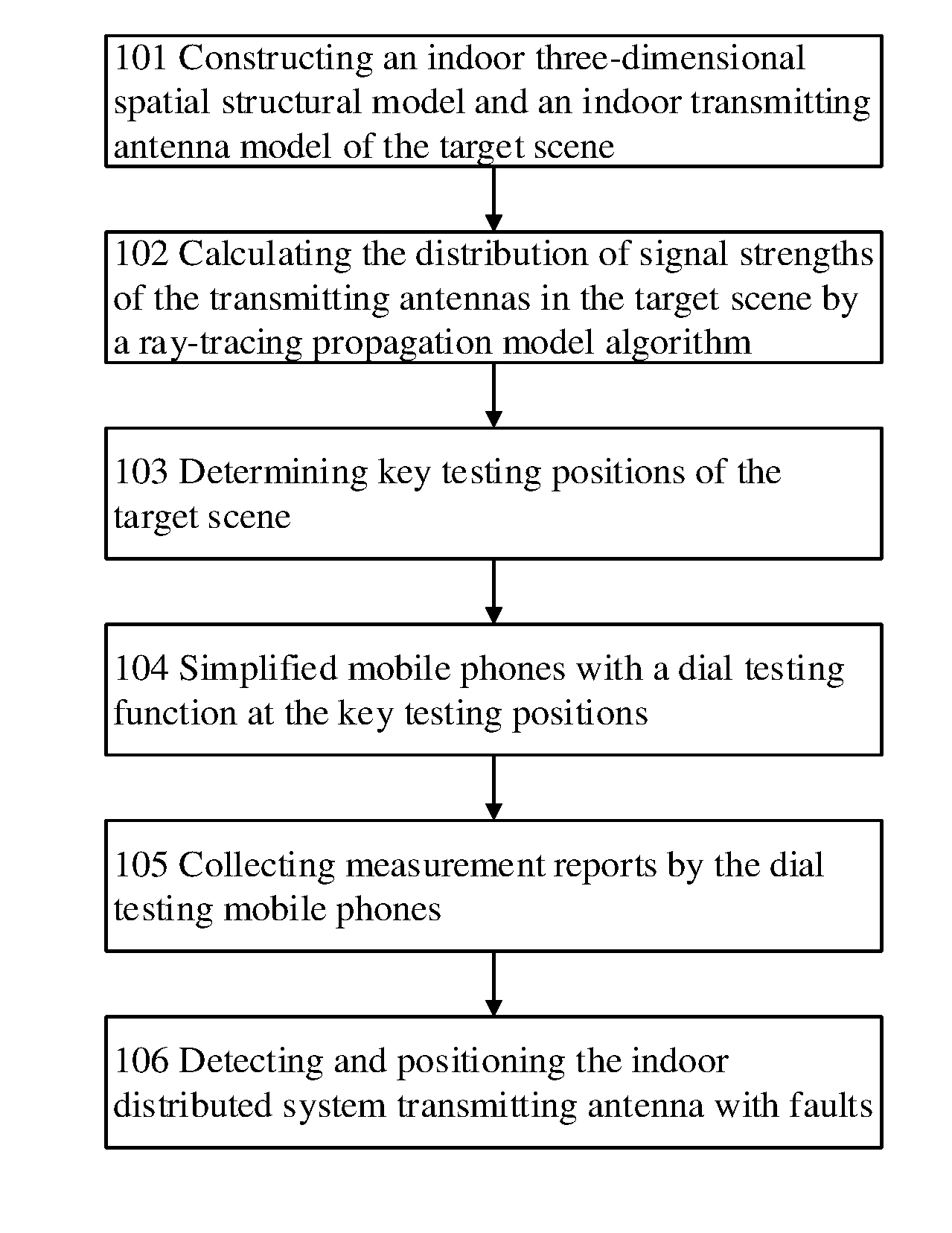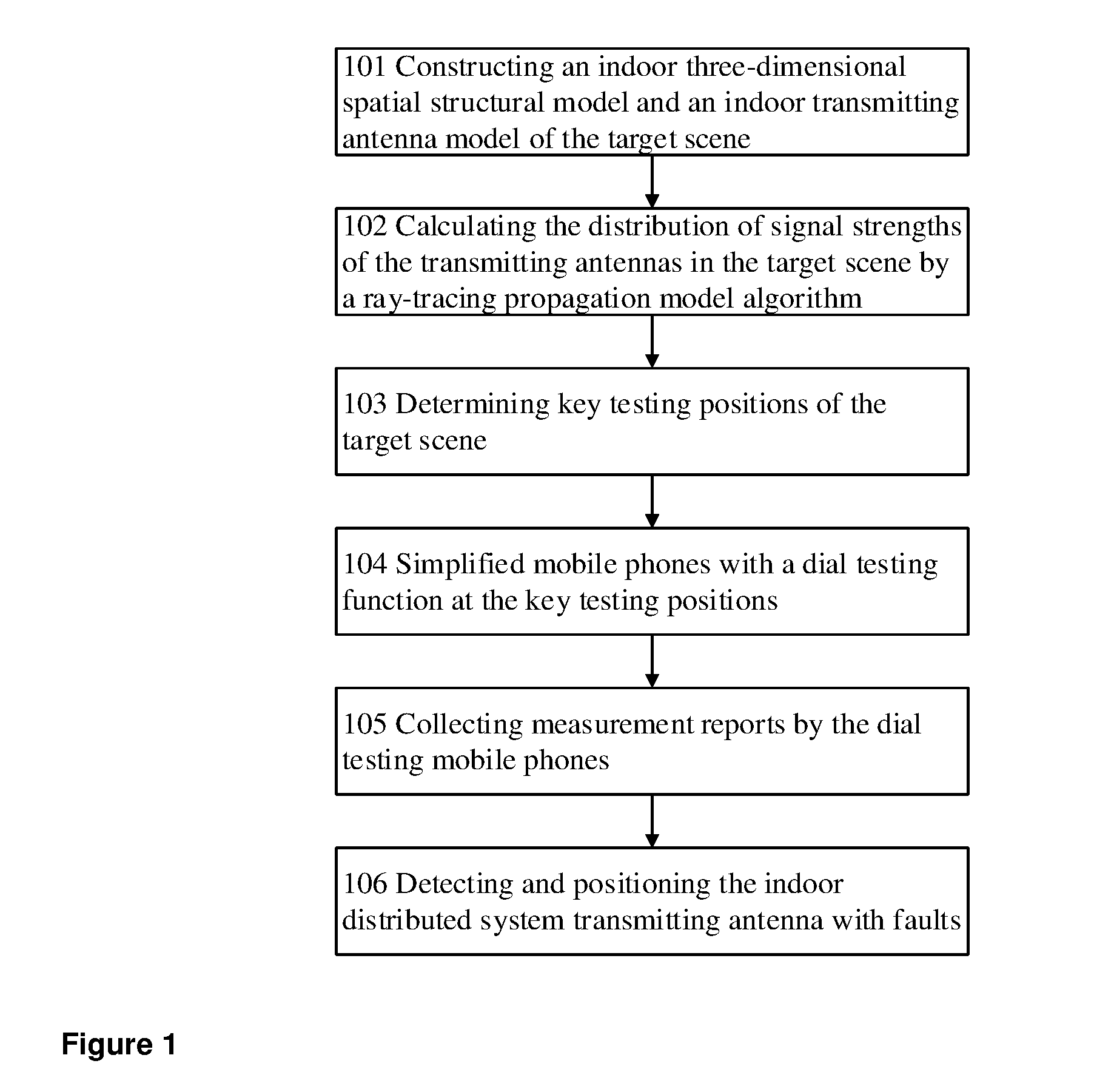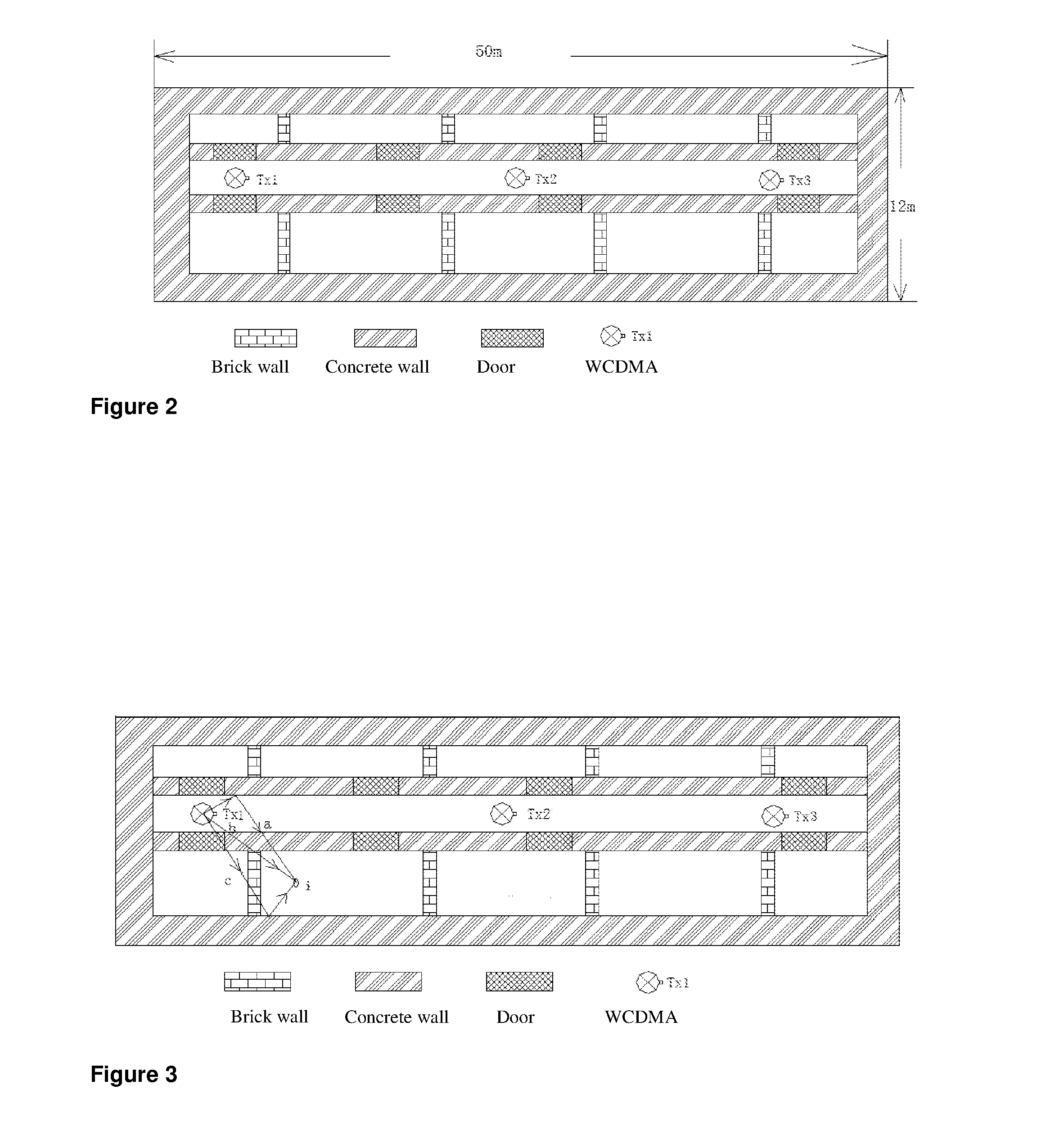An autonomous detecting and positioning method of indoor wireless network faults
- Summary
- Abstract
- Description
- Claims
- Application Information
AI Technical Summary
Benefits of technology
Problems solved by technology
Method used
Image
Examples
Embodiment Construction
[0046]The present invention will be further described in combination with the figures and embodiment.
[0047]An autonomous detecting and positioning method of indoor wireless network faults of this invention is applied to autonomously detect and position the faults of the WCDMA indoor wireless network in a target building of 5 floors (the floorage of each floor is 600 m2). The WCDMA indoor wireless networks in the target building belong to a same cell, and have 15 indoor wireless network transmitting antennas in total, 3 for each floor, which are arranged above the 2.4 meters high ceilings.
[0048]The technical solution this invention is not limited to WCDMA networks, but can also be applied to one or a combination of multiple other wireless communication networks (wireless wide area network and wireless local network).
[0049]As shown in FIG. 1, a method of rapidly establishing fingerprint database of indoor wireless signals comprises the following steps:
[0050](1): 101—building an indoor...
PUM
 Login to View More
Login to View More Abstract
Description
Claims
Application Information
 Login to View More
Login to View More - R&D
- Intellectual Property
- Life Sciences
- Materials
- Tech Scout
- Unparalleled Data Quality
- Higher Quality Content
- 60% Fewer Hallucinations
Browse by: Latest US Patents, China's latest patents, Technical Efficacy Thesaurus, Application Domain, Technology Topic, Popular Technical Reports.
© 2025 PatSnap. All rights reserved.Legal|Privacy policy|Modern Slavery Act Transparency Statement|Sitemap|About US| Contact US: help@patsnap.com



